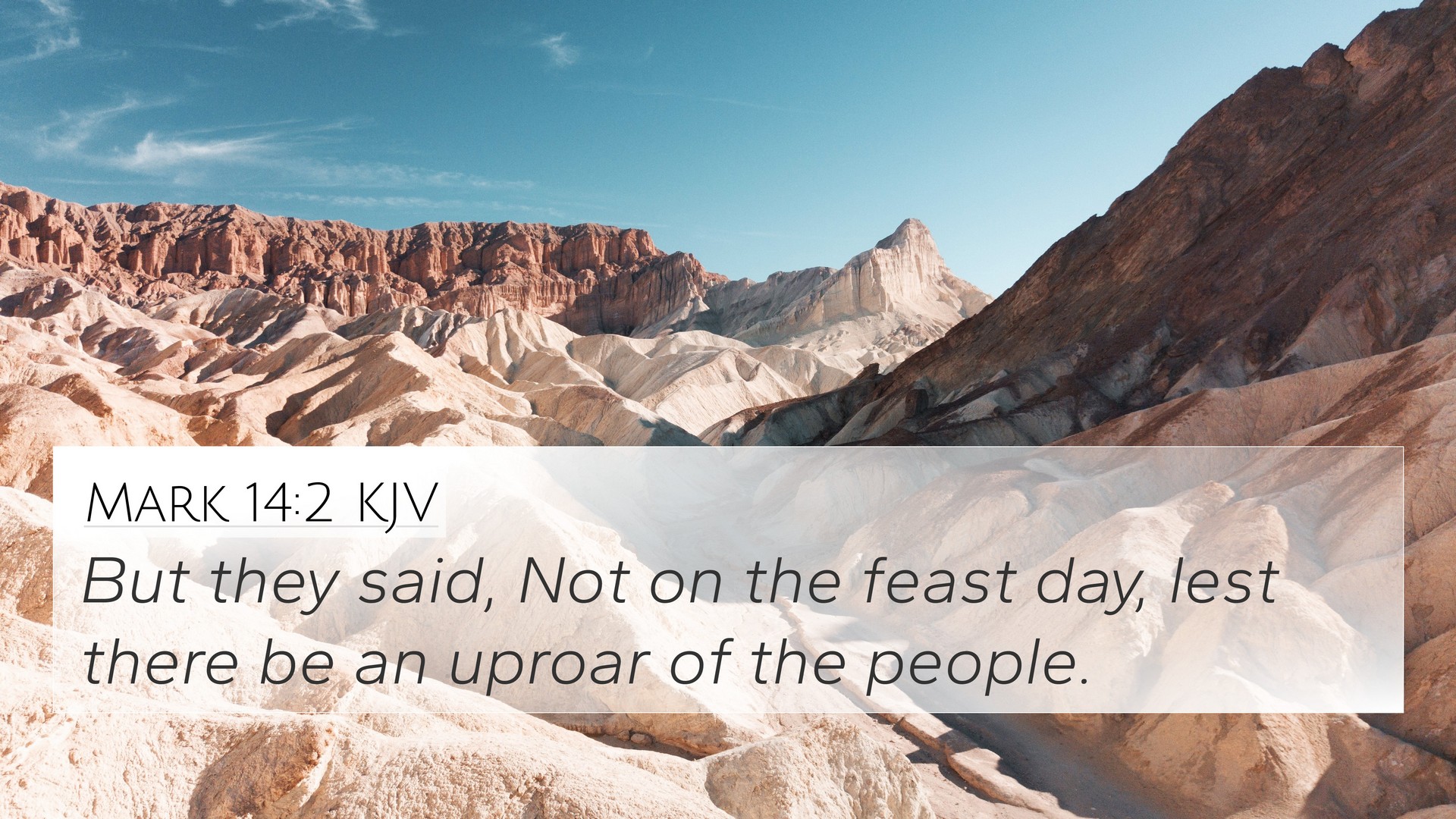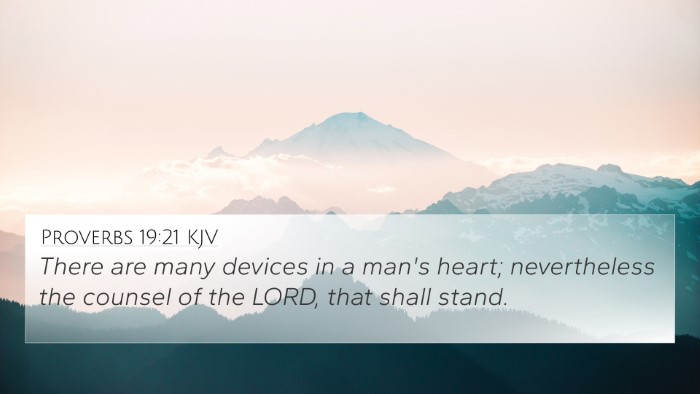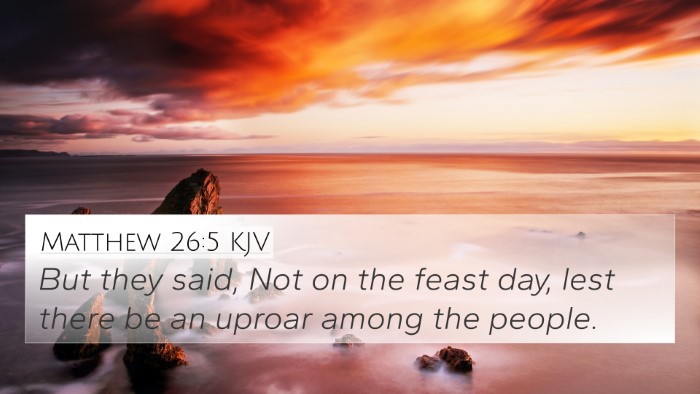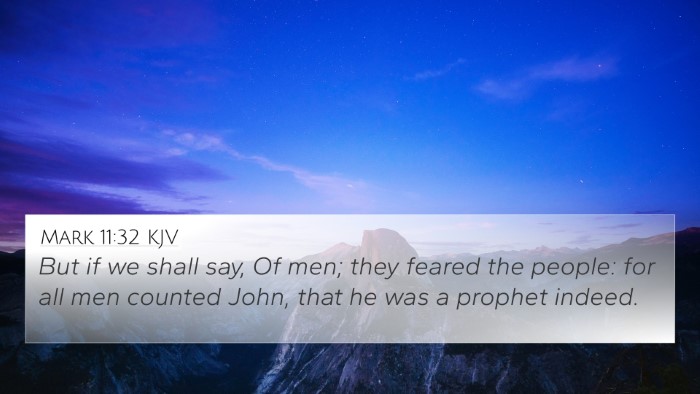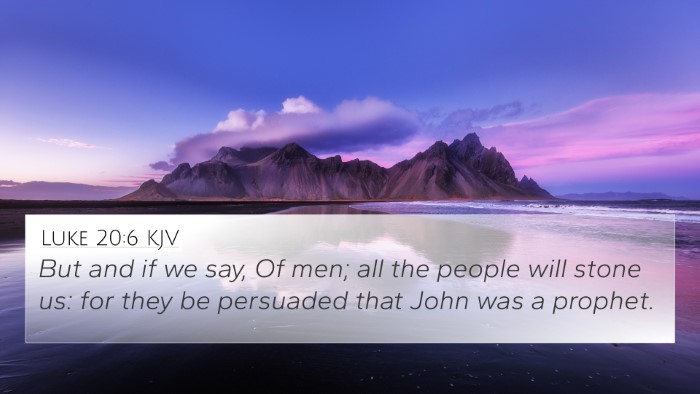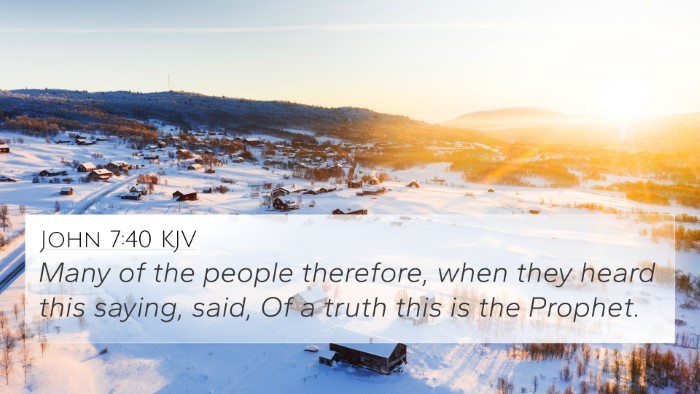Understanding Mark 14:2
Mark 14:2 states: "But they said, Not during the feast, lest there be an uproar of the people." This verse captures a pivotal moment leading up to the arrest of Jesus and highlights the cautious attitude of the religious leaders of the time.
Summary of Insights
This verse is significant as it reflects the tension between the authority of the Jewish leaders and the prevailing sentiments of the people. The chief priests and scribes were plotting to arrest Jesus but were wary of doing so during the Passover feast, a time when Jerusalem was bustling with visitors. They feared that any arrest might incite a riot among the people who celebrated Jesus’ reputation as a prophet.
- Fear of Public Backlash: As indicated in the commentaries, the leaders were fully aware of the affection the common people had for Jesus. Matthew Henry notes that this illustrates the struggle of the leaders who, while envious, were also fearful of the consequences of their actions.
- Caution in Strategy: Albert Barnes points out that the timing of their actions was critical. They were aware that to strike during the feast could lead to a significant disturbance, which they sought to avoid at all costs.
- Prophetic Fulfillment: Adam Clarke emphasizes that this moment aligns with prophetic scripture, portraying how the divine plan within the Gospels unfolds, on a timeline that was preordained.
Bible Cross-References
Mark 14:2 connects with several other passages that enhance understanding of the events surrounding the passion of Christ:
- Matthew 26:5: "But they said, Not during the feast, lest there be an uproar among the people." This verse directly parallels Mark 14:2, showing the shared concern of the religious leaders.
- John 11:48: “If we let him alone, all men will believe on him: and the Romans shall come and take away both our place and nation.” This illustrates the motivations driving the Pharisees’ fear of Jesus’ influence.
- Luke 22:2: "And the chief priests and scribes sought how they might kill him; for they feared the people." This verse again reflects the same apprehension about public reaction.
- John 7:13: “However, no one spoke openly of him for fear of the Jews.” This shows the oppressive environment created by the Jewish leaders, inhibiting public discourse about Jesus.
- Matthew 21:46: “But when they sought to lay hands on him, they feared the multitude, because they took him for a prophet.” This fear reaffirms the Jews' recognition of Jesus’ status among the people.
- Acts 5:26: “Then went the captain with the officers, and brought them without violence; for they feared the people, lest they should have been stoned.” Here, the fear of the crowd's reaction lingered even in the actions of the apostles.
- John 12:19: "The Pharisees therefore said among themselves, Perceive ye how ye prevail nothing? Behold, the world is gone after him." This verse exemplifies the growing concern about losing control due to Jesus' popularity.
Links to Other Themes in Scripture
Mark 14:2 not only speaks to the dynamics of authority and influence but also illustrates broader themes in biblical literature:
- Authority vs. Popularity: The ongoing struggle between established religious authority and the popular figures of Christ.
- Divine Timing: The importance of God's perfected timing in the plan of salvation, as reflected in various prophetic fulfillments.
- Public Perception: How the fear of public opinion shaped the actions of the Jewish leaders, showing a human tendency to prioritize reputation over righteousness.
Conclusion
In conclusion, Mark 14:2 is a multifaceted verse that reveals the complexities of the political, social, and spiritual landscape of the time. Utilizing tools for Bible cross-referencing, one can further explore the intricate connections between this and other passages, allowing for a deeper understanding of the unfolding story of Jesus' ministry and the tension leading to his crucifixion.
For those interested in how to find cross-references in the Bible or comprehensive Bible cross-reference materials, this verse serves as an excellent example of inter-Biblical dialogue and thematic connections.
